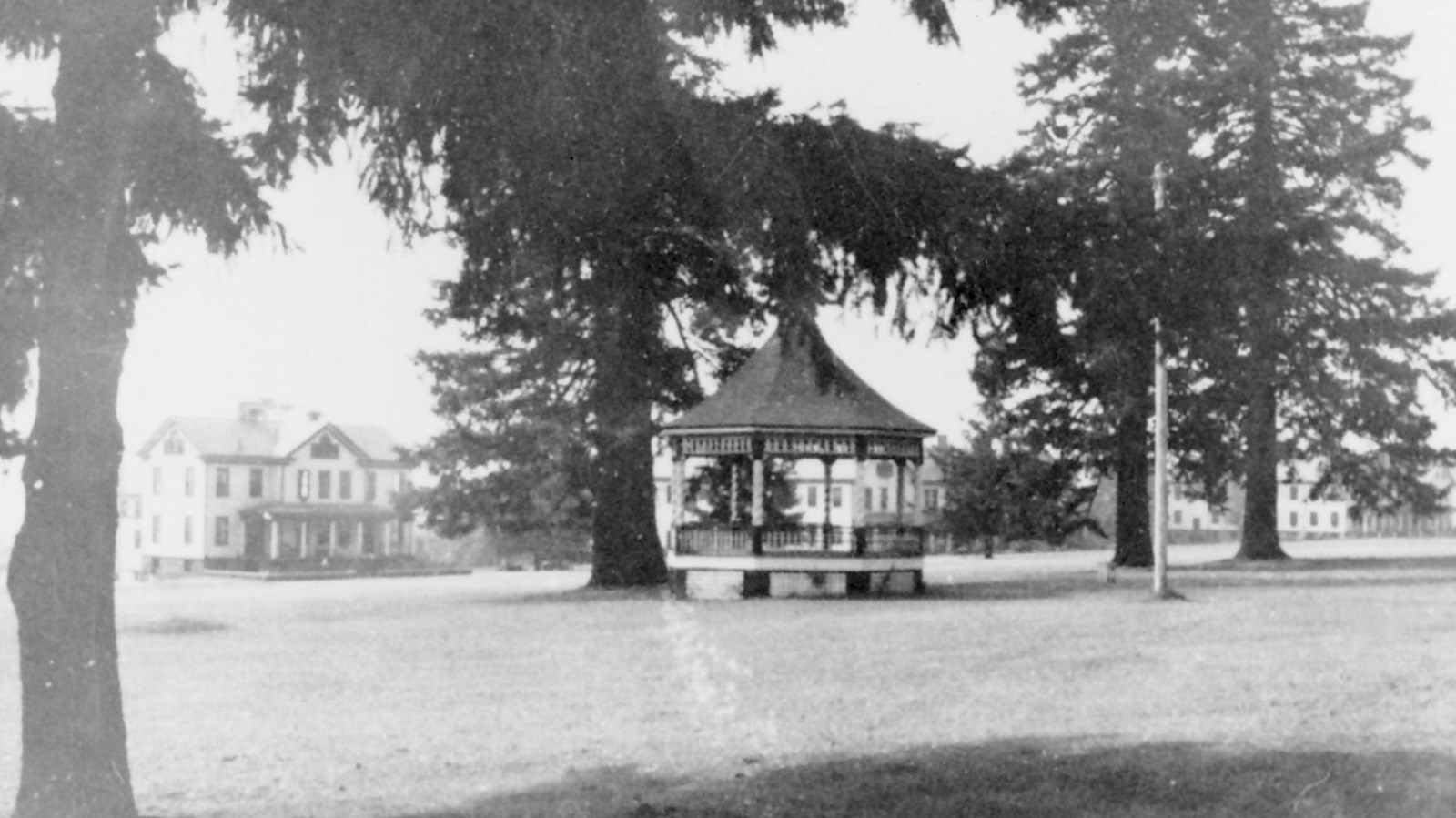Last updated: June 11, 2024
Place
Parade Ground Tour Stop 4: The Bandstand

Clark County Historical Museum, cchm10226
The white pavilion just east of the flagstaff is near the site of the barracks’ earliest known bandstand, dating to the 1870s. This modern structure serves as a reminder of the central role of musicians in the Army. Music shaped daily routine, from the reveille bugle call to taps in the evening. Special events and commemorations taking place on the Parade Ground, whether holidays like the Fourth of July, arrivals of a new post commander, or funerals, relied on musicians to set the tone, celebratory or solemn.
While creating uniformity, the music of Vancouver Barracks also revealed the diversity of its soldiers. Standing here in 1860, a visitor to the Army’s garrison would have heard not only the required standards, but a variety of songs influenced by the heritage of its soldiers. Throughout the 19th century, immigrants made up a significant proportion of enlisted soldiers, especially musicians. For new arrivals from Europe, military service represented a path to social and economic advancement, including citizenship. Primarily German and Irish, these men made up 18 of the 22 musicians posted here in 1860, and 16 of the 28 members of the 21st Infantry Band counted in the 1880 census. The music they played reflected their heritage, such as the many adaptations of the Irish folksong, The Girl I Left Behind Me, reflecting on the loss that often accompanied a soldier’s life.
Many of the women at the post were also German or Irish immigrants. Often working for the Army as laundresses, these women were married to enlisted men. Laundress Hannah Hartney, an Irish immigrant, lived with her husband James, also from Ireland, in a building that housed several dozen soldiers. Living alongside them was laundress Julia Frenieor and her two-year-old daughter Mary Ann. Laundry was an arduous, extended process, but one crucial to Army life. By providing such a vital service, these women supported themselves and their families, as well as the entire post.
Think of a tradition that is important to your family or culture. Have you ever shared that tradition with others? If so, how?
While creating uniformity, the music of Vancouver Barracks also revealed the diversity of its soldiers. Standing here in 1860, a visitor to the Army’s garrison would have heard not only the required standards, but a variety of songs influenced by the heritage of its soldiers. Throughout the 19th century, immigrants made up a significant proportion of enlisted soldiers, especially musicians. For new arrivals from Europe, military service represented a path to social and economic advancement, including citizenship. Primarily German and Irish, these men made up 18 of the 22 musicians posted here in 1860, and 16 of the 28 members of the 21st Infantry Band counted in the 1880 census. The music they played reflected their heritage, such as the many adaptations of the Irish folksong, The Girl I Left Behind Me, reflecting on the loss that often accompanied a soldier’s life.
Many of the women at the post were also German or Irish immigrants. Often working for the Army as laundresses, these women were married to enlisted men. Laundress Hannah Hartney, an Irish immigrant, lived with her husband James, also from Ireland, in a building that housed several dozen soldiers. Living alongside them was laundress Julia Frenieor and her two-year-old daughter Mary Ann. Laundry was an arduous, extended process, but one crucial to Army life. By providing such a vital service, these women supported themselves and their families, as well as the entire post.
Think of a tradition that is important to your family or culture. Have you ever shared that tradition with others? If so, how?
